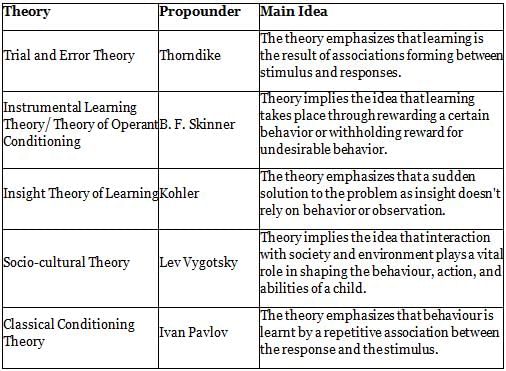MAHA TET Paper 2: Child Development and Pedagogy Test - 8 (Social Science) - MAHA TET MCQ
30 Questions MCQ Test - MAHA TET Paper 2: Child Development and Pedagogy Test - 8 (Social Science)
According to the theory of Bruner, which of the following statements is correct?
Which of the following is the major obstacle to ensure achievement of high academic standards from disadvantaged students?
| 1 Crore+ students have signed up on EduRev. Have you? Download the App |
The relationship between cognition and emotions is:
Self-study habit can be developed in children by
Given below are two statements : One is labelled as Assertion (A) and the other is labelled as Reason (R) :
Assertion (A) : A learner centered approach provides best experience for learners.
Reason (R) : Learner centered approach does not acknowledge the needs of the learner as central to learning experience.
In the light of the above statements, choose the correct answer from the options given below :
The hyperactive children need:
Even children of the same age vary greatly in appearance, abilities, temperament, interests, aptitude among other things. What is the role of the school in this regard?
Which of the following is an example of child-centered pedagogy?
Whom of the following has not propounded the learning theory?
The memory traces formed in the mind are called
Which of the following observations supports Howard Gardner’s theory of multiple intelligence?
While playing, a group of children enact scenes from a recent popular movie. This situation highlights that _________ is an important agency of socialization.
Which of the following is a true statement corresponding to Cephalocaudal Principle of Child's Development?
Which of the following is the most important function of language?
____takes place when a child strikes balance between the two processes while trying to internalise the perceived object.
Which of the following is not a technique to manage anxiety due to an approaching examination?
If extrinsic motivation is a means to an end, then intrinsic motivation is
Which of the following psychologists is associated with ‘language development’?
Which of the following statements is most appropriate about children making errors?
Which of the areas of individual differences is most important for organising educational programmes effectively?
For which group of learners, sign-language method is the most appropriate?
If a child has mental age of 5 years and chronological age of 4 years, then what will be the IQ of the child?
Which one of the following reasons is responsible for children to NOT learn critical thinking?
What role should parents play in a child's learning process?
Which of the following questions is NOT reflected upon by an inclusive school?
Identify the factors that do not contribute to the effectiveness of teaching from the options given below:
(a) Socio-economic background of Teacher
(b) Teacher's skill in pleasing the students
(c) Teacher's subject knowledge
(d) Teacher's personal contact with students
Choose the correct option :
Teachers need to create a good classroom environment to facilitate children’s learning. To create such a learning environment, which one of the given statements is not true?
What does the term 'PSRN' in development imply?
A teacher can respond to the interests of children with special needs by:
Which of the following is not correct regarding the growth of an individual?



















